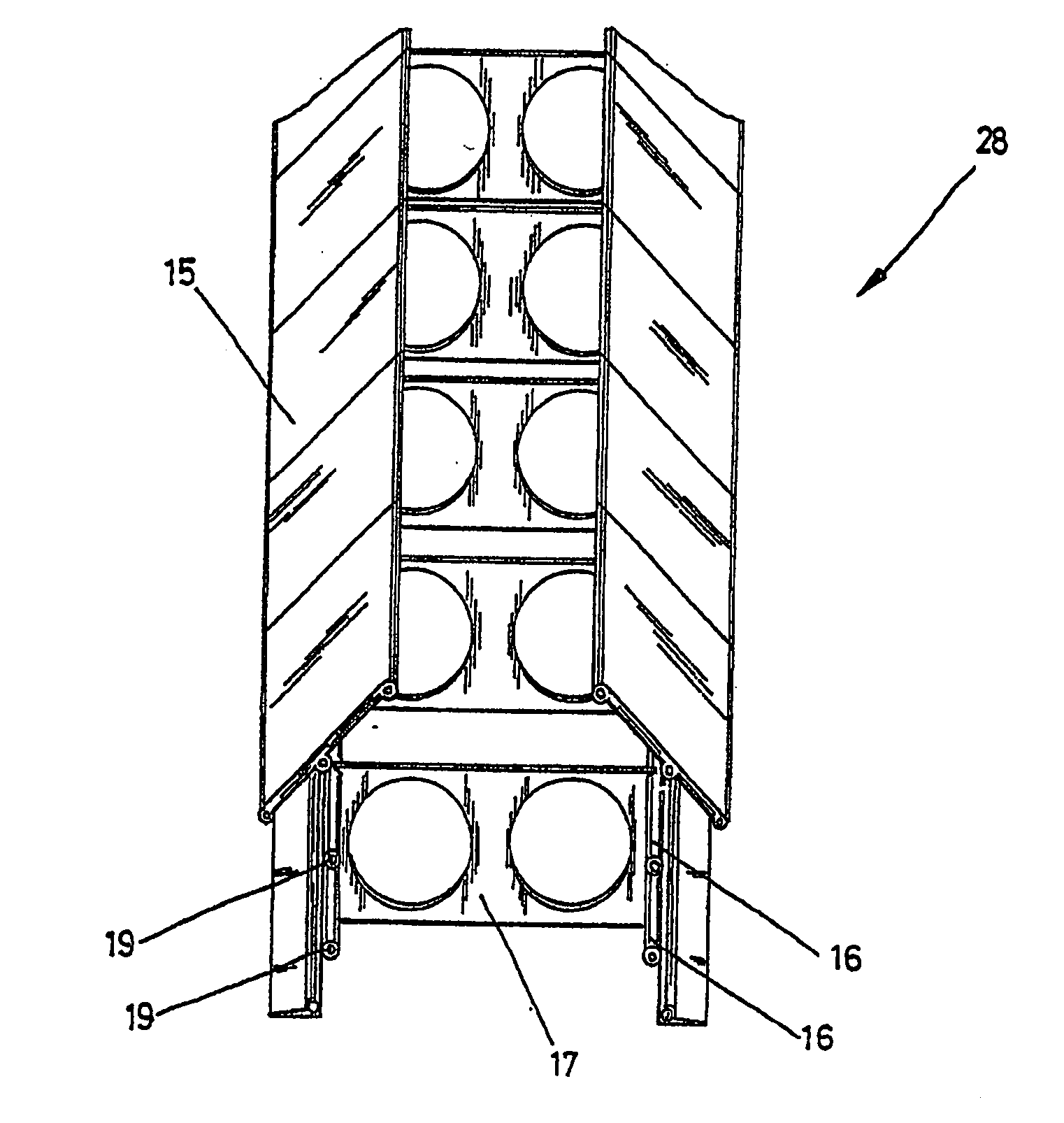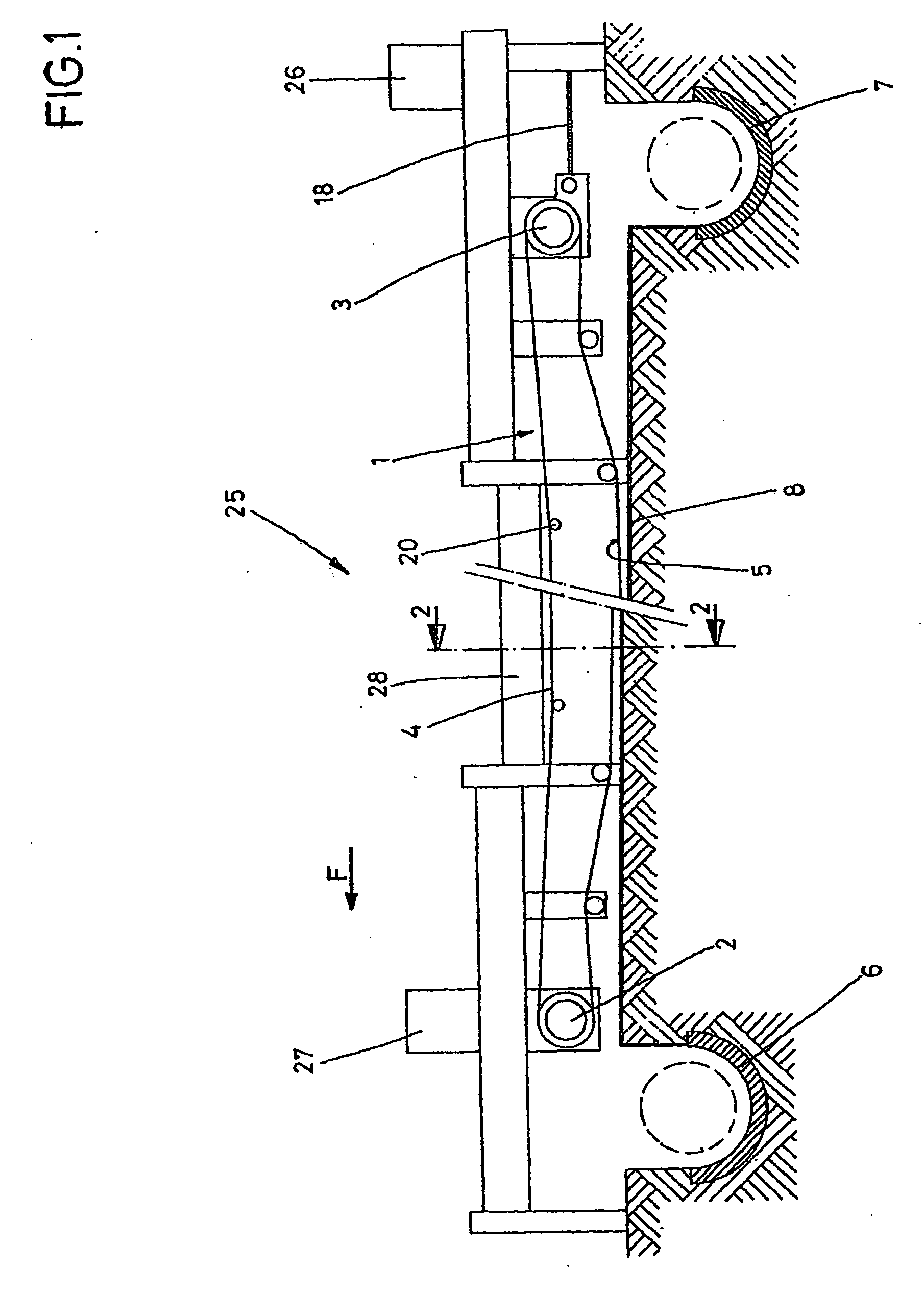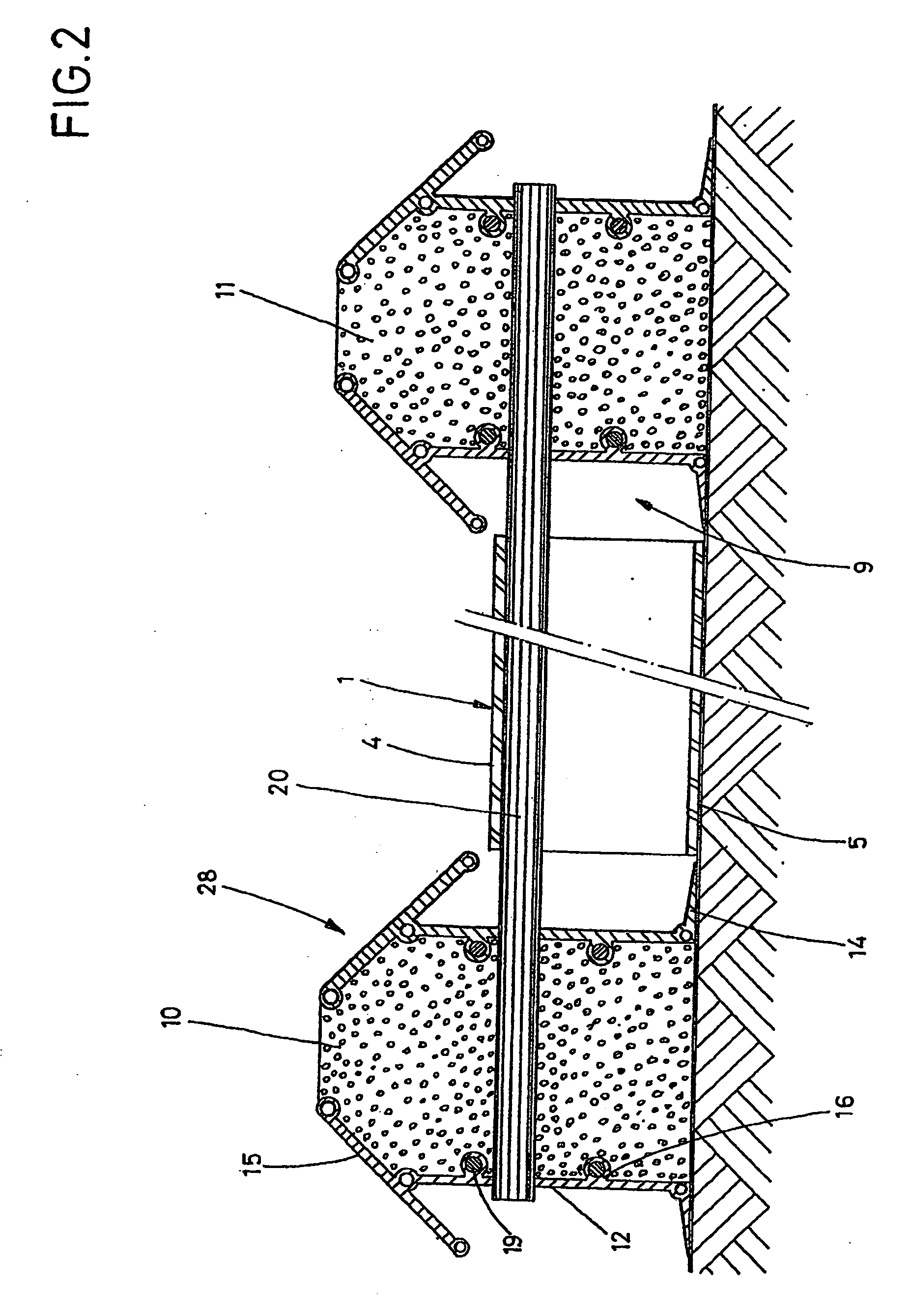Method for operating a feces conveyor device
a technology for transporting devices and manure, which is applied in the field of manure transport devices and the operation of devices, can solve the problems of difficult to guide planar textile structures as conveyor belts, considerable difficulties in carrying away very moist, mushy mixtures, and the failure of swine breeding operations to use such an arrangement, and achieves the effect of very cost-effective operation and manufacturing
- Summary
- Abstract
- Description
- Claims
- Application Information
AI Technical Summary
Benefits of technology
Problems solved by technology
Method used
Image
Examples
Embodiment Construction
[0042]FIG. 1 shows a manure transport device 25 that features a manure conveyor belt 1 which comprises, e.g., a perforated plastic belt that is guided around return rollers 2 and 3 so that an upper belt half 4 and a lower belt half 5 are formed. The belt may be used for livestock operations, such as, for example, underneath a manure-permeable stall floor. The upper belt half 4 rests on bearing shafts 20 and the lower belt half 5 rests on a plastic sheet (not shown for clarity) lying on the base 8, so that a good sliding ability of the plastic belt on the plastic sheet of the base is ensured. The return roller 3 is supported in an adjustable manner so that it can be tensioned via a tensioning device 18. It is thus possible to keep the plastic belt 1 always equally tensioned constantly irrespective of prevailing temperature conditions. The tensioning device 18 can work mechanically, hydraulically or pneumatically and can be controlled automatically or individually.
[0043] Electric mot...
PUM
 Login to View More
Login to View More Abstract
Description
Claims
Application Information
 Login to View More
Login to View More - R&D
- Intellectual Property
- Life Sciences
- Materials
- Tech Scout
- Unparalleled Data Quality
- Higher Quality Content
- 60% Fewer Hallucinations
Browse by: Latest US Patents, China's latest patents, Technical Efficacy Thesaurus, Application Domain, Technology Topic, Popular Technical Reports.
© 2025 PatSnap. All rights reserved.Legal|Privacy policy|Modern Slavery Act Transparency Statement|Sitemap|About US| Contact US: help@patsnap.com



